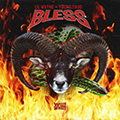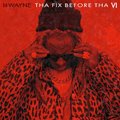
Music video director Eif Rivera recently chatted with Myspace about working with Lil Wayne on his “God Bless Amerika” music video and Fat Joe’s “Yellow Tape” music video, which also featured Wayne, A$AP Rocky, and French Montana.
Eif mentioned that they had to shoot the “Yellow Tape” visual on Weezy‘s schedule, because out of everyone his schedule is the craziest, and also talked about how they had to get permission from the people on the streets of New Orleans to shoot the “God Bless Amerika” visual, as well as the flag situation.
Read what Rivera said about working with Tune on these two music videos below!
On the “Yellow Tape” video:
For this one, Joe wanted to shoot down in Miami, because French and Wayne were both in town. We kind of all did it based on Wayne’s schedule, because it’s so crazy. A$AP Rocky did not show up for some reason, I think he got the dates mixed up or whatever the case was. We had a lot of fun shooting it though. It was really quick, about five hours. Because I edit my own videos, I know the shots when I see them. So we get it, then move on.We ended up shooting A$AP back in New York. He was at his hotel and asked, “Where are we going to shoot?” And I’m looking around his hotel room, and I say, “We’re going to shoot it right here.” And he’s looking at me like I’m crazy, but I tell him that we killed the budget because we shot in Miami. A$AP being A$AP was like, “Really?” We had to pretty much do it there, but my process with videos, creatively, is not really, “Let’s do this specific thing.” It’s more about sitting down with the artist and asking, “Hey, what are you feeling?” And that’s how we pulled “Yellow Tape” off. Everyone was happy with it.
On the “God Bless Amerika” video:
Prior to this, I did the “Yellow Tape” video with Wayne. And rewinding back to that video, Wayne came on set and he ended up hanging out for four or five hours. He loved the environment, everyone was having fun, laughing. He felt comfortable. He’s worked with so many people, he didn’t remember working with me.So here we are in New Orleans and some of the folks there—I mean the street elements—they were kind of like, hey, he can’t shoot here. Because the biggest thing is like, the people that grew up on the streets, they feel like they’re obligated to receive something back when an artist from their neighborhood gets big. I get it; I grew up in the South Bronx, and it’s like, you want to succeed and get out of there so you don’t have to come back. So we get there and they’re looking at us funny, and saying like, “What the hell’s going on here?” Some of them walked away from us, some of them stood their ground. And we said, hey, we’re here to shoot the video. A couple of my guys and I grew up in those elements, so we tried to communicate to them and said, he’s coming here and he’s going to show love. And he’s going to show what America doesn’t see, and we need your support to show respect for what we’re doing here. We want to show the world what’s going on with America. And they were cool with it! We ended up buying a bunch of food, we had them grilling on the corner, and we made them feel like they were part of something. They accepted us.
Lil Wayne pulls up in his car the next day. All he sees is a flag; he doesn’t know how many people are there. He doesn’t know how many people are supporting him. And so we stand him in front of the flag. He starts performing, he sees the flag drop and sees all the people behind him. And he lost it. We shot that part two or three times. I Instagrammed the photo with the plastic underneath the flag, so people could see that we weren’t letting it touch the ground when it dropped. But it was windy that day, and we let the cameras roll. And someone ended up recording the flag dropping when that plastic blew away.
He was really into the moment. At the end of his performance he puts his arm around me, and says, “I love the way we work.” Then, he gets in his car and was gone like the wind.





